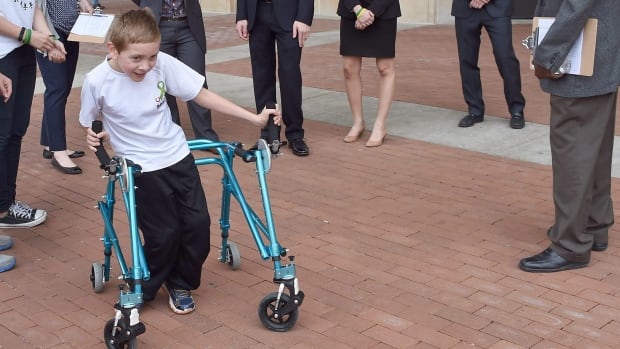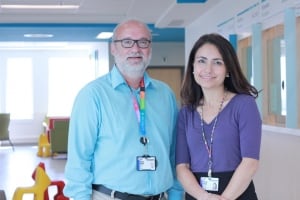Another Mystery Medical Finding
"Our findings were shocking, actually. When I showed the results to our clinical geneticists, initially they didn't believe it."
"In five percent, we found these spontaneous, massive changes. For five percent, these big changes are the cause of their CP."
"The other five percent were smaller changes, but affect lots of genes and in some cases were inherited from the parents. And we think they're involved in the medical complexities these kids have."
"I think what's really interesting here is that what was thought to be an almost entirely environmental disorder [caused by fetal injury or infection] has a significant genetic component."
"I can't imagine having a child who's got any disorder and not having some type of an explanation [as to why]. So I think it's pretty exciting that we can actually provide for these spontaneous cases that the parents didn't do anything wrong. They didn't make a wrong decision in their pregnancy or eat the wrong food or expose the fetus to the wrong thing. It was just a random genetic change."
Dr. Stephen Scherer, director, Centre for Applied Genomics, Hospital for Sick Children, Toronto (principal study investigator)

Braden Gandee, 8, who has cerebral palsy, tries out a new
customized walker in Ann Arbor, Michigan. (Tom Hawley/Monroe Evening News/Associated Press)
This assurance may provide some small comfort to parents of children who have cerebral palsy, but comfort it may very well represent. Yet, there is plainly nothing they have done to contribute to the fact that they have brought into this world a child whose condition may be coped with to lead as normal a life as possible, or on the other hand, severely impact the quality and length of life of their child and there is nothing much they can do about it.
"For most kids we can find some risk factors — you were born early or you were exposed to this or that — but they're always left kind of wondering: 'If I had done something differently ...' Knowing is a big part of the process of dealing with such a diagnosis."
Dr. Maryam Oskoui, pediatric neurologist, Montreal Children's Hospital, study co-author
 |
| The study was co-authored by Dr. Michael Shevell and Dr. Maryam Oskoui at the Research Institute of the McGill University Health Centre. (McGill University Health Centre) |
Medical science has long had the impression that a brain injury in the fetus stage caused cerebral palsy, held to be the most common cause of physical disability in children. A new study published in the journal Nature Communications reflecting the research of a team of physicians at the McGill University Health Centre in Montreal has reached a different conclusion after performing genome sequencing tests on 115 children and their parents.
Ten percent of the children presented with DNA alterations known as copy number variations, (CNVs) affecting clinically relevant genes. Those number variations can be seen as deletions, additions or reorganized segments of DNA having the potential to lead to disease. Roughly two in every thousand babies are born affected by cerebral palsy.

In the MRI of the brain, gray matter is pale
gray and white matter is dark gray. Image 1 shows a healthy brain, while
Image 2 shows the brain of a child with cerebral palsy, with red arrows
showing scarring over the central gray matter. That leads to stiffness
and problems in the coordination of movements. (McGill University Health
Centre)
The genetic testing of that group of affected children from across Canada found that in ten percent of cases what appeared to have caused the condition was DNA structural alterations. Whereas the traditional medical wisdom had it that cerebral palsy was caused by a stroke or infection of the brain in the developing fetus. Or alternately, caused by birth asphyxia; a lack of oxygen to the baby during delivery.
Labels: Bioscience, Canada, Health, Research

0 Comments:
Post a Comment
<< Home